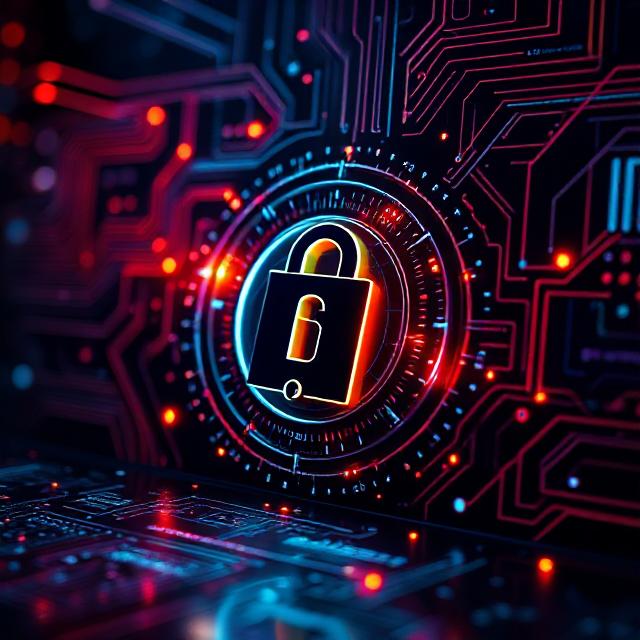Introduction
In an era marked by growing cyber threats, data breaches, and digital surveillance, the need for secure communication has never been more critical. Traditional cryptographic methods, which rely on mathematical algorithms and computational complexity, are increasingly vulnerable to the advent of powerful quantum computers. In this context, Quantum Cryptography emerges as a transformative solution, offering theoretically unbreakable security based on the principles of quantum mechanics rather than mathematical assumptions.
Quantum Cryptography leverages the bizarre yet fundamental behaviors of quantum particles—such as superposition, entanglement, and no-cloning theorem—to develop encryption methods that are immune to eavesdropping and future quantum attacks. This article provides a comprehensive educational overview of quantum cryptography, its principles, implementation, advantages, challenges, and future scope.
What is Quantum Cryptography?
Quantum Cryptography is a method of securing communication by using the laws of quantum physics. Unlike classical cryptography, which depends on mathematical algorithms and computational assumptions, quantum cryptography exploits the quantum properties of particles to ensure secure data transmission.
The most prominent application of quantum cryptography is Quantum Key Distribution (QKD), which allows two parties to generate a shared, secret random key that is used to encrypt and decrypt messages. Any attempt to intercept this key alters its quantum state, thereby exposing the presence of an eavesdropper.
Why Classical Cryptography Is at Risk
Classical cryptographic systems such as RSA, AES, and Elliptic Curve Cryptography (ECC) depend on the difficulty of solving certain mathematical problems, such as:
- Factoring large numbers (RSA)
- Discrete logarithms (ECC)
- Integer lattice problems (for some post-quantum schemes)
While these are secure against today’s computers, quantum algorithms like Shor’s Algorithm and Grover’s Algorithm threaten their long-term viability.
- Shor’s Algorithm can factor large integers exponentially faster than classical algorithms, effectively breaking RSA and ECC.
- Grover’s Algorithm can search an unsorted database in √N time, weakening the strength of symmetric encryption by halving its effective key length.
Therefore, there is a growing urgency to develop cryptographic methods that remain secure even in a quantum-enabled future. This is where quantum cryptography becomes indispensable.
Principles Behind Quantum Cryptography
Quantum cryptography relies on several fundamental principles of quantum mechanics:
1. Superposition
Quantum particles (like photons or electrons) can exist in multiple states simultaneously. For instance, a photon can be polarized in both vertical and horizontal directions at the same time.
2. Measurement Disturbs the System
In quantum mechanics, measuring a quantum system changes its state. This property ensures that any eavesdropping attempt can be detected because the act of measurement by a third party will introduce detectable anomalies.
3. No-Cloning Theorem
Quantum states cannot be copied exactly. This makes it impossible for an eavesdropper to intercept and duplicate the quantum key without being detected.
4. Quantum Entanglement
When particles are entangled, the state of one particle instantly determines the state of the other, no matter the distance. This property can be used for ultra-secure communication channels.
Quantum Key Distribution (QKD): The Heart of Quantum Cryptography
The most widely used and studied application of quantum cryptography is Quantum Key Distribution (QKD). It enables two users (commonly called Alice and Bob) to share a secret encryption key securely, even in the presence of a potential eavesdropper (Eve).
BB84 Protocol
Developed in 1984 by Charles Bennett and Gilles Brassard, the BB84 protocol is the first and most well-known QKD scheme. It uses the polarization states of photons to encode binary values (0s and 1s).
Steps of BB84:
- Alice sends polarized photons to Bob using two sets of polarization bases (rectilinear and diagonal).
- Bob measures the received photons using randomly chosen bases.
- Alice and Bob compare bases over a public channel but not the measurement outcomes.
- They discard mismatched bases and retain the rest as a key.
- They test a small subset of the key to detect eavesdropping.
- If no interference is detected, the remaining key is used for encryption.
E91 Protocol
Proposed by Artur Ekert in 1991, this protocol uses quantum entanglement instead of polarization. It ensures security based on Bell’s Theorem and quantum non-locality, rather than the no-cloning theorem.
Advantages of Quantum Cryptography
1. Unbreakable Security
Quantum cryptography offers theoretical security guarantees that are not dependent on computational difficulty. The security arises from the fundamental laws of nature.
2. Eavesdropper Detection
Any attempt to intercept or measure quantum information introduces observable changes, alerting the communicating parties.
3. Future-Proof
Since it does not rely on algorithmic hardness, quantum cryptography is resistant to attacks from quantum computers—making it ideal for long-term secure communication.
4. Secure Key Exchange
QKD allows two parties to exchange keys without sharing them over classical channels, eliminating a major vulnerability in traditional encryption systems.
Challenges and Limitations
Despite its promise, quantum cryptography is not without challenges:
1. Infrastructure Requirements
Quantum cryptography requires dedicated quantum channels, typically in the form of fiber optics or free-space optics, which can be costly and difficult to deploy on a large scale.
2. Distance Limitations
Photons traveling through fiber experience loss and decoherence, limiting the effective range of QKD to around 100–300 km without quantum repeaters.
3. Quantum Repeaters
Unlike classical repeaters, quantum repeaters are still under development. They are essential for long-distance quantum communication, especially for building a quantum internet.
4. High Costs
Quantum cryptography systems are still in the early commercial phase and involve high setup and operational costs, making them less accessible.
5. Practical Vulnerabilities
While quantum theory ensures unbreakable security, real-world implementations may have loopholes or be vulnerable to side-channel attacks, such as detector blinding or Trojan-horse attacks.
Global Developments and Initiatives
China
- Launched QUESS (Micius), the world’s first quantum satellite in 2016.
- Developed the Beijing-Shanghai Quantum Communication Line, covering over 2000 km.
- Aims to build a quantum internet by 2030.
United States
- The National Quantum Initiative Act (2018) provides over $1 billion for quantum research.
- DARPA and NIST are working on quantum-resistant cryptography and QKD.
European Union
- The Quantum Flagship Program invests €1 billion in quantum technologies over 10 years.
- Projects like OPENQKD are testing QKD networks across Europe.
India
- Announced the National Mission on Quantum Technologies and Applications (NM-QTA) in 2020 with a budget of ₹8,000 crore.
- The DRDO and ISRO are actively engaged in quantum communication research.
- In 2022, India demonstrated a QKD link between Prayagraj and Vindhyachal, marking a significant step forward.
Applications of Quantum Cryptography
1. Military and Defense
- Enables secure battlefield communication and protects against cyber warfare.
- Used in secure transmission of satellite and drone data.
2. Banking and Finance
- Protects sensitive financial transactions and customer data from interception or fraud.
3. Government Communication
- Secures diplomatic channels and high-level political communication against foreign surveillance.
4. Healthcare and Medical Data
- Ensures privacy and integrity of electronic health records (EHR) and genomic data.
5. Quantum Internet
- An emerging concept that uses quantum protocols to create a global network with secure communication and distributed quantum computing.
Future of Quantum Cryptography
Quantum cryptography is still in its developmental phase but is progressing rapidly. Key future developments include:
1. Quantum Repeaters
These will extend the range of QKD systems to hundreds or even thousands of kilometers by overcoming signal loss.
2. Satellite-Based QKD
Quantum satellites like Micius have already demonstrated intercontinental QKD. A network of such satellites could enable a global quantum communication system.
3. Integration with Classical Systems
Hybrid systems that combine classical and quantum cryptography will ensure a smooth transition and cost-effective deployment.
4. Quantum Networks
Efforts are underway to develop metropolitan quantum networks that will eventually form the backbone of the quantum internet.
Conclusion
Quantum Cryptography marks a paradigm shift in the field of secure communication. By leveraging the fundamental laws of quantum mechanics, it offers a level of security that is not just stronger, but inherently unbreakable. While challenges remain in terms of scalability, cost, and infrastructure, rapid advancements in quantum technology and international collaboration are steadily overcoming these barriers.
As we move towards a future dominated by quantum computers, quantum cryptography stands as our best defense in safeguarding digital communication, national security, financial systems, and personal privacy. For students, researchers, and policymakers alike, understanding this emerging field is crucial to preparing for a more secure and quantum-enabled world.
Summary Points
Quantum cryptography will be central to the quantum internet, secure satellite links, and military defense systems in the near future.
Quantum Cryptography secures communication using quantum physics rather than math.
The most famous technique is Quantum Key Distribution (QKD), especially BB84 and E91 protocols.
Offers unbreakable security, eavesdropper detection, and is future-proof against quantum threats.
Real-world challenges include cost, range limitations, and implementation vulnerabilities.
India and other countries are actively investing in quantum communication networks.




